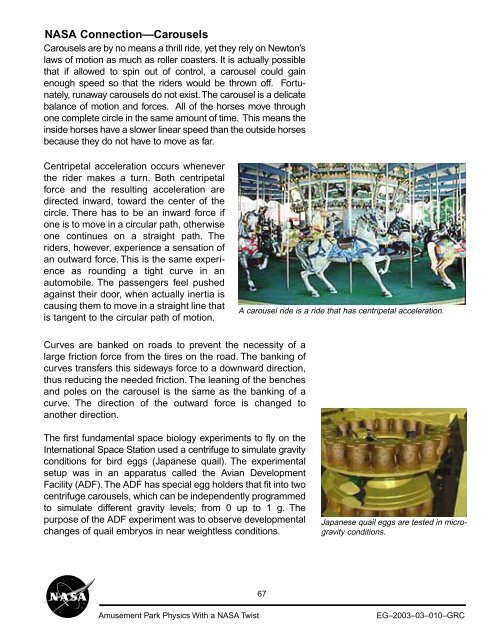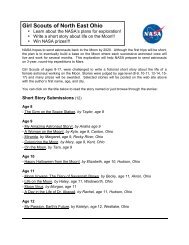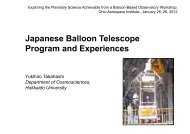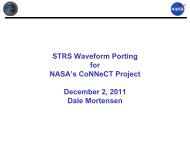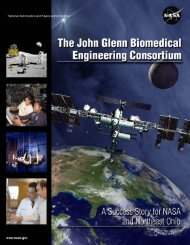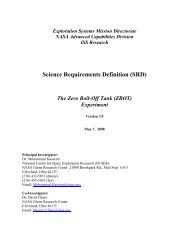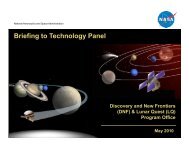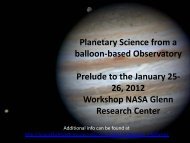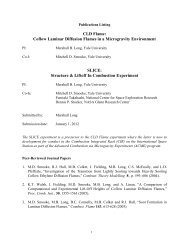Amusement Park Physics With a NASA Twist - Space Flight Systems ...
Amusement Park Physics With a NASA Twist - Space Flight Systems ...
Amusement Park Physics With a NASA Twist - Space Flight Systems ...
You also want an ePaper? Increase the reach of your titles
YUMPU automatically turns print PDFs into web optimized ePapers that Google loves.
<strong>NASA</strong> Connection—Carousels<br />
Carousels are by no means a thrill ride, yet they rely on Newton’s<br />
laws of motion as much as roller coasters. It is actually possible<br />
that if allowed to spin out of control, a carousel could gain<br />
enough speed so that the riders would be thrown off. Fortunately,<br />
runaway carousels do not exist. The carousel is a delicate<br />
balance of motion and forces. All of the horses move through<br />
one complete circle in the same amount of time. This means the<br />
inside horses have a slower linear speed than the outside horses<br />
because they do not have to move as far.<br />
Centripetal acceleration occurs whenever<br />
the rider makes a turn. Both centripetal<br />
force and the resulting acceleration are<br />
directed inward, toward the center of the<br />
circle. There has to be an inward force if<br />
one is to move in a circular path, otherwise<br />
one continues on a straight path. The<br />
riders, however, experience a sensation of<br />
an outward force. This is the same experience<br />
as rounding a tight curve in an<br />
automobile. The passengers feel pushed<br />
against their door, when actually inertia is<br />
causing them to move in a straight line that<br />
is tangent to the circular path of motion.<br />
A carousel ride is a ride that has centripetal acceleration.<br />
Curves are banked on roads to prevent the necessity of a<br />
large friction force from the tires on the road. The banking of<br />
curves transfers this sideways force to a downward direction,<br />
thus reducing the needed friction. The leaning of the benches<br />
and poles on the carousel is the same as the banking of a<br />
curve. The direction of the outward force is changed to<br />
another direction.<br />
The first fundamental space biology experiments to fly on the<br />
International <strong>Space</strong> Station used a centrifuge to simulate gravity<br />
conditions for bird eggs (Japanese quail). The experimental<br />
setup was in an apparatus called the Avian Development<br />
Facility (ADF). The ADF has special egg holders that fit into two<br />
centrifuge carousels, which can be independently programmed<br />
to simulate different gravity levels; from 0 up to 1 g. The<br />
purpose of the ADF experiment was to observe developmental<br />
changes of quail embryos in near weightless conditions.<br />
Japanese quail eggs are tested in microgravity<br />
conditions.<br />
67<br />
<strong>Amusement</strong> <strong>Park</strong> <strong>Physics</strong> <strong>With</strong> a <strong>NASA</strong> <strong>Twist</strong><br />
EG–2003–03–010–GRC


